A field trip report by Gladys Steorts
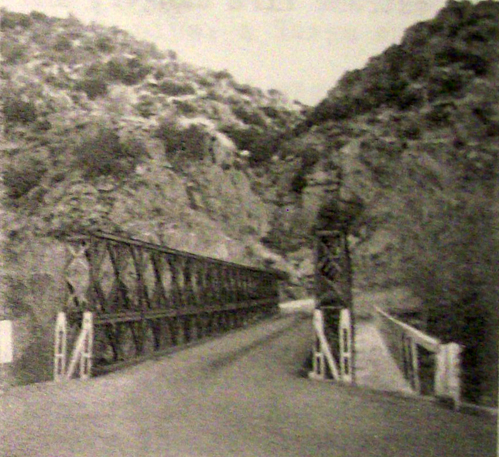
The day was hot. There were only five of us who showed up for the trip. We met at Carl Cambridge’s Museum on Bear Valley Road in Apple Valley in about 9:30 AM and left via Deep Creek Road to Rock Springs Road and across the river to Lake Arrowhead Road and then via Summit Valley Road to Miller Canyon and Lake Gregory Road to Cedar Springs.
Because of the heat, this was to be more of the picnic been a field trip. We had chosen Cedar Springs because of its location in the big binds and the stream which ran nearby the campground. The site is located on the East Fork of the West Fork of the Mojave River in T2N, R3W, Sec. 6, San Bernardino County.
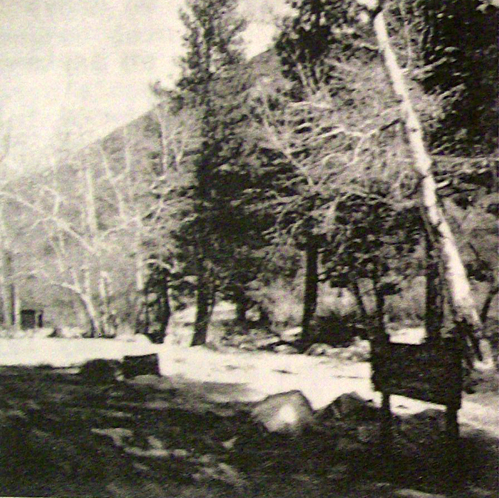
When we arrived, we found the stream bed entirely dry, and the picnic table which we chose was sitting in the middle of the dry wash. while we enjoyed our picnic lunch, the Martins talk to the early days when they brought their children and grandchildren and camp by this dream which was at that time a swift moving and cool, sparkling little creek. We then tried to imagine what it would be like in a few years when the entire area will be underwater. Already, many of the homes had been removed in preparation for the time when the dam will be billed at the forks of the river, to hold back the waters of the Feather River when they are delivered to the Southland to water the thirsty reservoirs at the Mojave River Valley and the great metropolitan area.
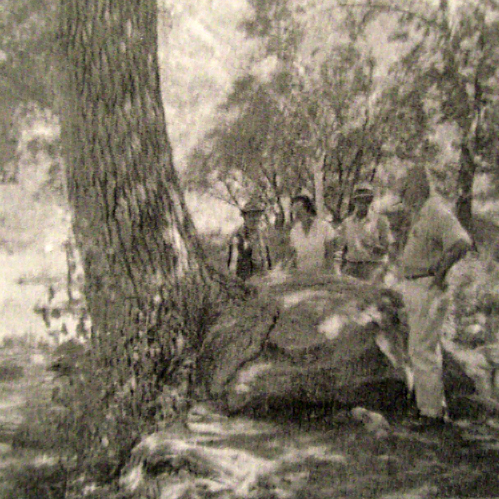
As we sat and talked, we began to look around, and we realize that the well-known landmarks would soon disappear. Nearby, was a huge old pine tree with roots in twined around a very large boulder which had once been at the stream’s edge. Close by was a beautiful old sycamore with a satellite branch, just right for small and not so small boys to climb. downstream was a grand old tree that guarded the dry stream bed and looked as if it had been watching over the course of the stream for many years. We took some pictures and left.
Our road led us through Summit Valley to a road which took us up to Cleghorn Canyon in search of a way to reach a monument which was said to be located at a point where Fr. Francisco Garces (1776) and Jedediah Smith (1826) had crossed over from the desert to the San Bernardino Valley.
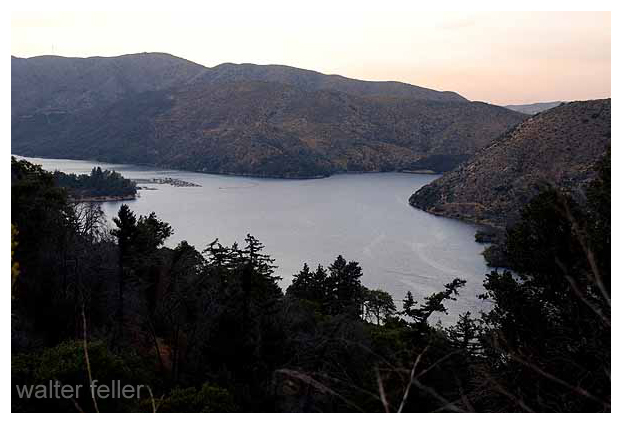
We failed to locate a way to reach the monument, but we did find a vast area that had been almost denuded by a destructive forest fire which had swept the area only a few weeks earlier. in the midst of this, we also observed a “guzzler” which still contained water, and the ground around was covered with thousands of little tracks which was evidence of the birds and small animals that had somehow survived the ravages of the flames. Joel Martin mentioned that he had, at one time, worked on a project to help install these guzzlers which were designed to help preserve the wildlife of the county and state.
As we return down the canyon to the Summit Valley Rd., Carl Cambridge suddenly called a stop, and there beside the road, where the road had crossed a dry wash, lay a large metate. There was also the ruins of an old cabin and signs of placer mining, which told a silent story of a culture and a generation earlier than ours.
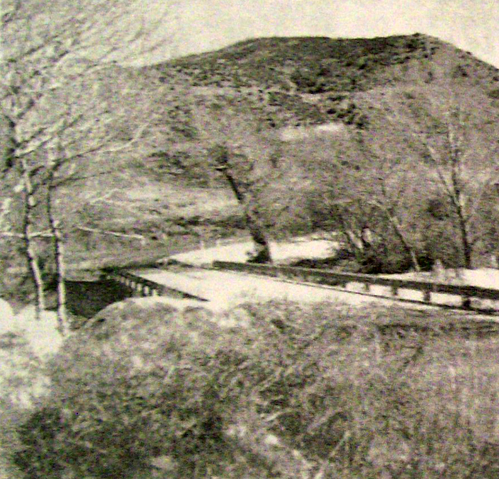
We retraced our road to where the Summit Valley Road and the road to Cedar Springs meet, to make a survey of his site of an old Indian camp which Carl had told us had been discovered there several years ago, but all that we found were a few fire stones and the dark and soil, evidence that the Indians had once been there.
Although no great historical facts were uncovered, the day proved to be very interesting, and in time it may be looked back upon as being of historic interest because of what was but is no longer.
As we thought about the things that were taking place in the area, we realize that, just as the last remnants of other eras were disappearing, the day would soon come when the landmarks that are so familiar in the area today will soon be gone. So we took more pictures for remembrance.
from:
A Field Trip Report by Gladys Steorts
Mohahve III – Scrapbooks of History (c)1966
Mohahve Historical Society